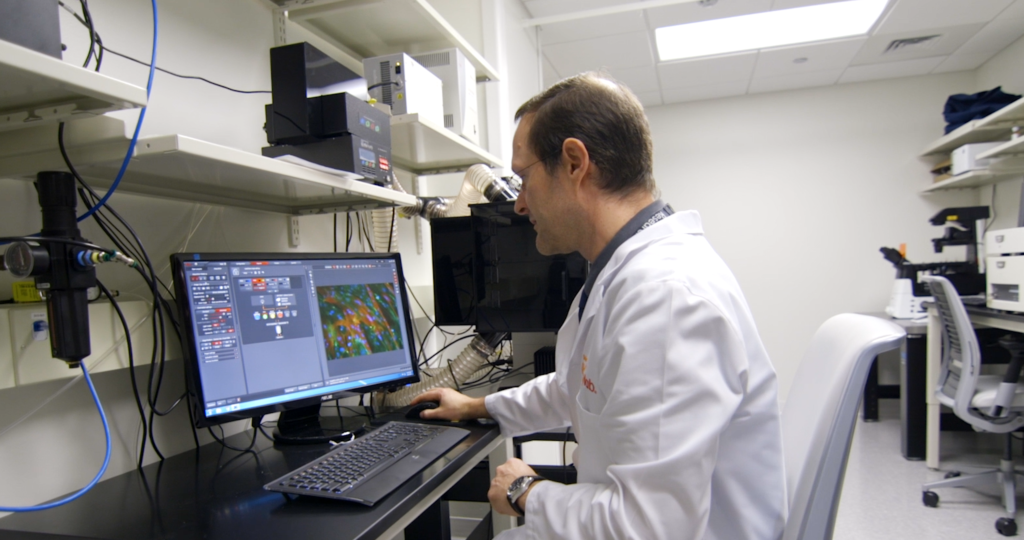Body
Click HERE to go to our latest publication.
Cerebral palsy (CP) has a significant impact on the development of the muscle and skeletal systems after birth. It causes the progressive tightening, thinning and shortening of muscles, often leading to the development of so-called “muscle contractures”. Contractures prevent joints to move freely, making it difficult and often painful to walk, or to reach forward to grasp and hold objects. Over time, movement can get even more limited: as the patient grows, muscles get shorter, thinner, weaker and less flexible, which can make it harder to live an active, healthy and independent life.
Our research has shown that development of muscle contractures in CP are linked to a failure of the muscle to grow properly after birth. We have data showing that this is in part associated with a reduction of activity of stem cells living in the muscles. The job of these stem cells, also called satellite cells, is to “repair” muscles when they get injured, and to help muscles grow bigger and stronger when the child develops into an adult. We are currently researching the mechanisms for this deficiency in children with CP.
Two major properties of stem cells are proliferation and differentiation. When needed, muscle satellite cells will first proliferate and then differentiate into new muscle fibers, increasing or restoring muscle mass and strength. We have discovered that the epigenetic program that controls these properties at the DNA level is impaired in satellite cells from children with CP. As a positive outcome of this research, we have also discovered that this impairment could be "reversed" by using DNA methyl transferase (DNMT) inhibitors, some of which have already been approved by the FDA as drugs to treat neoplastic conditions like myelodysplastic syndromes and acute myeloid leukemia.
We showed that after being treated with DNMT inhibitors in a dish, satellite cells from children with CP grew new muscle tissue much better than did untreated cells, seemingly “resetting” the epigenetic DNA program of these cells and unmasking their potential to differentiate again into muscle. Although further preclinical research is needed, we hope that pharmacological repurposing of this or similar drugs in combination with physical therapy (or exercise) may one day slow down, prevent or even reverse the progression of muscle and motor dysfunction in CP.

Click HERE to go back.
Mentioned Profile


